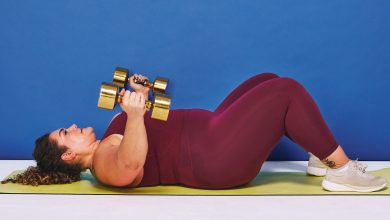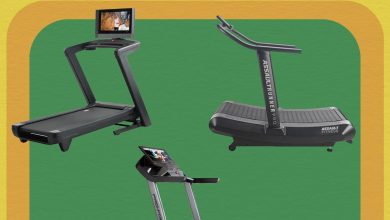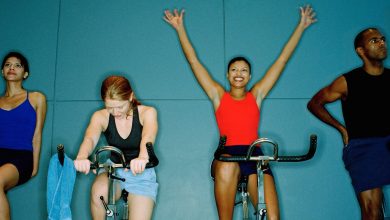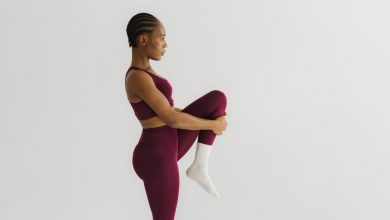What Compression Socks Can—and Can’t—Do for Your Workouts
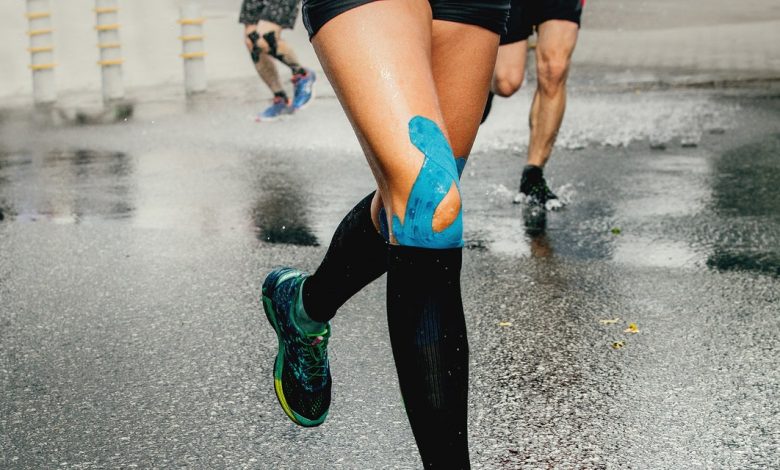
Of course, how you feel the day or two after a race or a heavy lifting session may matter more to you than your levels of certain blood chemicals. And several studies have found people report perceiving less discomfort in the next day or two after wearing them.
“Everyone’s different,” Susie Reiner, PhD, CSCS, certified exercise physiologist and post-doctoral researcher at the University of Kentucky’s Sports Medicine Research Institute, tells SELF. But if you’re prone to post-exercise soreness or your training is getting a little more intense, there’s little downside to trying them, either during or after your workout or race. If you’re already sore, the sensation of squeezing around your muscles could make you feel more stable and get you moving again sooner, she says—and light physical activity is among the most effective forms of relief for post-exercise soreness.
But they probably won’t help you run faster or lift more—at least not while you’re wearing them.
In theory, boosting venous return should help more oxygen-rich blood flow back to the muscles, which could improve performance, Dr. Rubin says. But in practice, there’s little evidence that wearing compression socks during a race or hard workout affects your pace or the weight you can push. For example, in a 2015 study in the Journal of Orthopaedic & Sports Physical Therapy, marathoners didn’t run faster if they were wearing them.
“In the grand scheme of things, for athletic performance, we can’t say that it typically affects it too much,” Dr. Malek says. Factors like nutrition and sleep are likely to have a far greater impact.
But there could be a psychological element involved in wearing them on race day or for a big effort—if they warm up your muscles or make you feel fast, sturdy, or strong, you might just find yourself able to push a little harder as a result, Dr. Reiner says.
And some research suggests your next workout might go better, Dr. Rubin says. According to a small 2019 study in the Journal of Science and Medicine in Sport, runners who wore them in one 5K time trial were able to run a second 5K an hour later in a faster time.
And they probably don’t ward off injury, either.
While many athletes say they wear compression socks to prevent getting hurt or keeping a minor pain from becoming a bigger injury, there’s no evidence to support that approach, Dr. Rubin says. “It might empower people to feel like they’re doing something,” he says. “But it’s not evidence-based.”
If you’re going to try compression socks, here’s what to keep in mind.
Ask your health care team before trying them if you have cardiovascular conditions (say, like peripheral artery disease or high blood pressure) or if you have nerve damage due to something like diabetes, Dr. Malek says, since any numbness in your legs might mean you won’t notice if the socks are too tight (they should feel snug, but not painful) or cause skin issues. For folks who are generally healthy, there’s little risk in trying them for yourself.
In that case, if you’re wearing them during exercise, you should look for moisture-wicking compression socks with a pressure of 20 to 30 mmHg, Dr. Rubin recommends. Those with health conditions like POTS or damaged veins might want more pressure, but check with your healthcare provider—and if you’re using them for something like diabetes or lymphedema, get them custom-fitted, Dr. Malek says.
The bottom line? While they might not push you to a PR, there are a few benefits to trying compression socks (unless you have a medical reason to avoid them). And if putting on a pair makes you feel more excited and motivated to hit the gym or toe the starting line, even better.
Related:
- 6 Small, Everyday Things Physical Therapists Wish You’d Stop Doing
- Does Using Resistance Bands ‘Count’ as Strength Training?
- Does Stretching Sore Muscles Actually Help the Pain Go Away?
Get more of SELF’s great fitness coverage delivered right to your inbox—for free.
